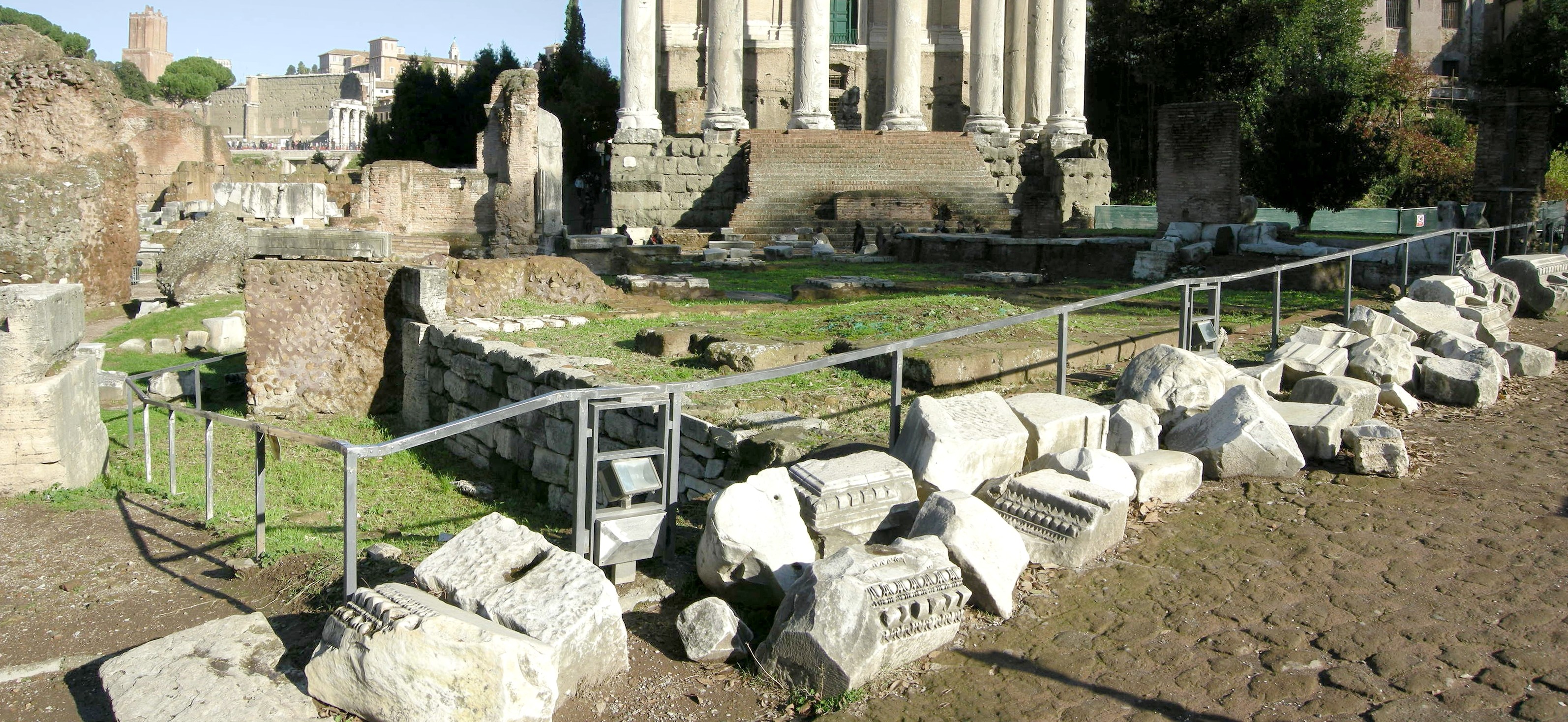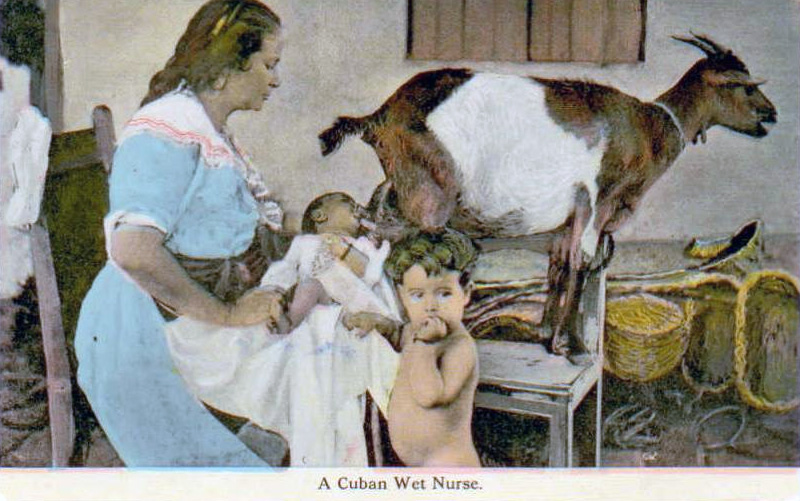|
Foundation Of Rome
The founding of Rome was a prehistoric event or process later greatly embellished by Roman historians and poets. Archaeological evidence indicates that Rome developed from the gradual union of several hilltop villages during the Final Bronze Age or early Iron Age. Prehistoric habitation of the Italian Peninsula occurred by 48,000 years ago, with the area of Rome being settled by around 1600 BC. Some evidence on the Capitoline Hill possibly dates as early as and the nearby valley that later housed the Roman Forum had a developed necropolis by at least 1000BC. The combination of the hilltop settlements into a single polity by the later 8th centuryBC was probably influenced by the trend for city-state formation emerging from ancient Greece. Roman myth held that their city was founded by Romulus, son of the war god Mars and the Vestal virgin Rhea Silvia, fallen princess of Alba Longa and descendant of Aeneas of Troy. Exposed on the Tiber river, Romulus and his twin R ... [...More Info...] [...Related Items...] OR: [Wikipedia] [Google] [Baidu] [Amazon] |
Rhea Silvia
Rhea (or Rea) Silvia (), also known as Ilia, (as well as other names) was the mythical mother of the twins Romulus and Remus, who founded the city of Rome.Livy I.4.2 This event was portrayed numerous times in Roman art. Her story is told in the first book of '' Ab Urbe Condita Libri'' of Livy and in Cassius Dio's ''Roman History''. The Legend of Rhea Silvia recounts how she was raped by Mars while she was a Vestal Virgin, resulting in the twins, as mentioned in the ''Aeneid'' and the works of Ovid. Legend According to Livy's account of the legend, she was the daughter of Numitor, king of Alba Longa, and descended from Aeneas. Numitor's younger brother Amulius seized the throne and killed Numitor's son, then forced Rhea Silvia to become a Vestal Virgin, a priestess of the goddess Vesta. As Vestal Virgins were sworn to celibacy, this would ensure the line of Numitor had no heirs. Rhea, however, became pregnant with the twins Romulus and Remus by the god Mars.Livy I.4.2 ... [...More Info...] [...Related Items...] OR: [Wikipedia] [Google] [Baidu] [Amazon] |
Varronian Chronology
The Varronian chronology is the commonly-accepted chronology of early Roman history named after the Roman antiquarian Marcus Terentius Varro. It is from this chronology that the commonly-used dates for the Founding of Rome, foundation of the city (753 BC), the Overthrow of the Roman monarchy, overthrow of the monarchy (509 BC), the Decemvirate (Twelve Tables), Decimvirates (451–450 BC), the Gallic sack of Rome (390 BC), and the Lucius Sextius Lateranus, first plebeian consul (366 BC) are derived. The chronology consists of an ordered list of magisterial colleges (eg pairs of Roman consul, consuls) which, in modern times, are regularly assigned to Anno Domini, years BC. The years given by the Varronian chronology prior to 300 BC should not be accepted as absolute dates. Years in the chronology are also demonstrably incorrect and it flows four years prior to actual events by 340 BC. Moreover, Roman historians and antiquarians (most especially L ... [...More Info...] [...Related Items...] OR: [Wikipedia] [Google] [Baidu] [Amazon] |
Palatine Hill
The Palatine Hill (; Classical Latin: ''Palatium''; Neo-Latin: ''Collis/Mons Palatinus''; ), which relative to the seven hills of Rome is the centremost, is one of the most ancient parts of the city; it has been called "the first nucleus of the Roman Empire". The site is now mainly a large open-air museum whilst the Palatine Museum houses many finds from the excavations here and from other ancient Italian sites. Imperial palaces were built there, starting with Augustus. Before imperial times the hill was mostly occupied by the houses of the rich. The hill originally had two summits separated by a depression: the higher summit was called ''Palatium''; the lower ''Germalus'' (or ''Cermalus''). Using the Forma Urbis Romae, Forma Urbis its perimeter enclosed ; while the Regionary Catalogues of the 4th century enclose . Etymology According to Livy (59 BC – AD 17) the Palatine hill got its name from the Arcadia (ancient region), Arcadian settlers from Pallantium, named fro ... [...More Info...] [...Related Items...] OR: [Wikipedia] [Google] [Baidu] [Amazon] |
Numitor
In Roman mythology, King Numitor () of Alba Longa was the maternal grandfather of Rome's founder and first king, Romulus, and his twin brother Romulus and Remus, Remus. He was the son of Procas, descendant of Aeneas the Troy, Trojan, and father of the twins' mother, Rhea Silvia, and Lausus (son of Numitor), Lausus. In 794 BC Procas died and was meant to be succeeded by Numitor. Instead he was overthrown and removed from the kingdom by his brother, Amulius, who had no respect for his father's will or his brother's seniority. Amulius also murdered Numitor's sons, in an effort to remove power from his brother for himself.Livy I.3.10 Rhea Silvia was made a Vestal Virgin by Amulius, rendering her unable to have children on pain of death; however, according to myth, she was forcibly impregnated by the god Mars (mythology), Mars. Romulus and Remus Battle of Alba Longa, overthrew Amulius and reinstated Numitor as Latin kings of Alba Longa, king in 752 BC.Dionysius of Halicarnassus ''Roma ... [...More Info...] [...Related Items...] OR: [Wikipedia] [Google] [Baidu] [Amazon] |
Amulius
In Roman mythology, Amulius () was king of Alba Longa who ordered the death of his infant, twin grandnephews Romulus, the eventual founder and king of Rome, and Remus. He was deposed and killed by them after they survived and grew to adulthood. He is the brother and usurper of Numitor and son of Procas. He was said to have reigned 41 years before his death (793-752 BC). Dionysius of Halicarnassus ''Roman Antiquities'' 1.71 His brother had been king, but Amulius overthrew him, killed his son, and took the throne. He forced Rhea Silvia, Numitor's daughter, to become a Vestal Virgin, a priestess of Vesta, so that she would never bear any sons that might overthrow him. However, she was raped or seduced by the god Mars, resulting in the birth of the twins. Rhea was thrown into prison and her sons ordered to be thrown into the river Tiber. The twins washed up onto dry land and were found by a she-wolf who suckled them. Later their mother was saved by the river god Tiberi ... [...More Info...] [...Related Items...] OR: [Wikipedia] [Google] [Baidu] [Amazon] |
Faustulus
In Roman mythology, Faustulus was the shepherd who found the infant Romulus (the future founder of the city of Rome) and his twin brother Remus along the banks of the Tiber River as they were being suckled by the she-wolf, Lupa. According to legend, Faustulus carried the babies back to his sheepfold for his wife Acca Larentia to nurse them. Faustulus and Acca Larentia then raised the boys as their own. Romulus later defeated and killed King Amulius of Alba Longa, with the help of Faustulus, and his brother Pleistinus. Romulus and Remus set out to build their own city, but then had a falling-out. In the ensuing skirmish, Faustulus and Pleistinus were killed. Romulus went on to found Rome. Representation in Livy's ''From the Founding of the City'' The Roman historian Livy details the story of the infants Romulus and Remus in his work '' Ab urbe condita libri'' (From the Founding of the City). According to Livy, after the rape of the Vestal Virgin Rhea Silvia, who later claime ... [...More Info...] [...Related Items...] OR: [Wikipedia] [Google] [Baidu] [Amazon] |
Lupercal
The Lupercal (from Latin ''wikt:lupa, lupa'' "female wolf") was a cave at the southwest foot of the Palatine Hill in Rome, located somewhere between the temple of Temple of Cybele (Palatine), Magna Mater and the Sant'Anastasia al Palatino. In the legend of the founding of Rome, Romulus and Remus were found there by the she-wolf (Roman mythology), she-wolf who suckled them until they were rescued by the shepherd Faustulus. Luperci, the priests of Faunus, celebrated certain ceremonies of the Lupercalia at the cave, from the earliest days of the City until at least 494 AD. Modern discovery In January 2007, Italian archaeologist Irene Iacopi announced that she had probably found the legendary cave beneath the remains of Emperor Augustus's house, the ''Domus Livia'', on the Palatine. Archaeologists came across the 15-meter-deep cavity while working to restore the decaying palace. On 20 November 2007, the first set of photos were released showing the vault of the grotto which is enc ... [...More Info...] [...Related Items...] OR: [Wikipedia] [Google] [Baidu] [Amazon] |
She-wolf (Roman Mythology)
In the Founding of Rome, Roman foundation myth, the She-Wolf ( in Latin) was an Italian wolf who nursed and sheltered the twins Romulus and Remus after they were abandoned in the wild by decree of Amulius, King Amulius of Alba Longa. She cared for the infants at her den, a cave known as the Lupercal, until they were discovered by a shepherd, Faustulus. Romulus would later become the founder and first king of Rome and both twins became famous throughout history as the founders of the Rome we know today. The image of the She-Wolf suckling the twins has been a symbol of Rome since ancient times and is one of the most recognizable icons of ancient mythology. Origins There is evidence that the wolf held a special place in the world of the ancient peoples of Italy. One legend claims that the Hirpini people were so-called because, when they set out to find their first colony, they were led to its location by a wolf (from the Osco-Umbrian word for wolf: ''hirpus''). The tale of the Lu ... [...More Info...] [...Related Items...] OR: [Wikipedia] [Google] [Baidu] [Amazon] |
Human–animal Breastfeeding
Human to animal breastfeeding has been practiced in some different cultures during various time periods. The practice of breastfeeding or suckling between humans and other species occurred in both directions: women sometimes breastfed young animals, and animals were used to suckle babies and children. Animals were used as substitute wet nurses for infants, particularly after the rise of syphilis increased the health risks of wet nursing. Goats and donkeys were widely used to feed child abandonment, abandoned babies in foundling hospitals in 18th- and 19th-century Europe. Breastfeeding animals has also been practised, whether for perceived health reasons – such as to toughen the nipples and improve the flow of milk – or for religious and cultural purposes. A wide variety of animals have been used for this purpose, including puppies, kittens, piglets and monkeys. Breastfeeding by animals of humans Terracotta feeding bottles surviving from the third millennium BC in Sume ... [...More Info...] [...Related Items...] OR: [Wikipedia] [Google] [Baidu] [Amazon] |
Tiber River
The Tiber ( ; ; ) is the List of rivers of Italy, third-longest river in Italy and the longest in Central Italy, rising in the Apennine Mountains in Emilia-Romagna and flowing through Tuscany, Umbria, and Lazio, where it is joined by the River Aniene, to the Tyrrhenian Sea, between Ostia (Rome), Ostia and Fiumicino. It Drainage basin, drains a basin estimated at . The river has achieved lasting fame as the main watercourse of the city of Rome, which was founded on its eastern banks. The river rises at Mount Fumaiolo in Central Italy and flows in a generally southerly direction past Perugia and Rome to meet the sea at Ostia (town), Ostia. The Tiber has advanced significantly at its mouth, by about , since Roman times, leaving the ancient port of Ostia Antica (archaeological site), Ostia Antica inland."Tiber River". ''Encyclopædia Britannica''. 2006 However, it does not form a proportional river delta, delta, owing to a strong north-flowing sea current close to the shore, d ... [...More Info...] [...Related Items...] OR: [Wikipedia] [Google] [Baidu] [Amazon] |






